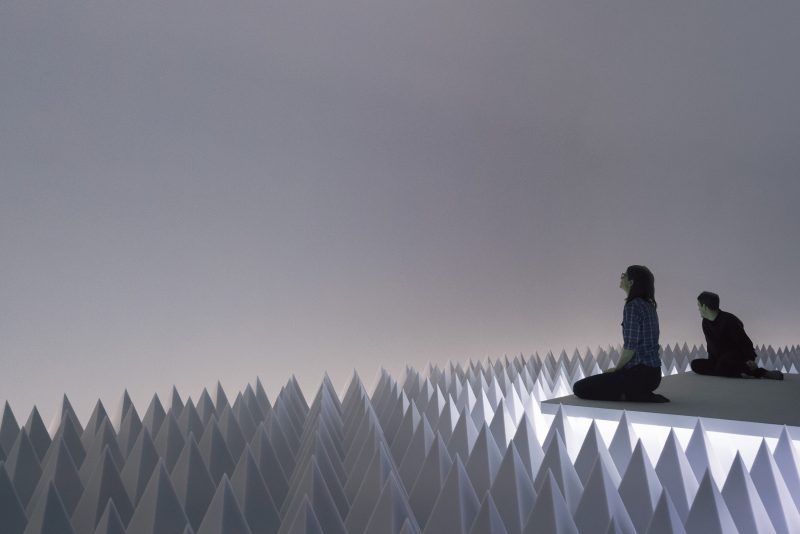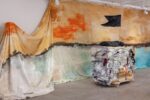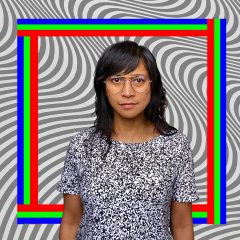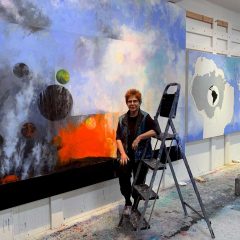Two things drew me to the Solomon R. Guggenheim Museum recently: the prospect of seeing the entire rotunda filled with the museum’s own collection, up through September 2, and Doug Wheeler’s “PSAD Synthetic Desert III” (1971), on view through August 2–tickets are extremely limited and must be purchased in advance.
Wheeler’s installation is part of the collection of Giuseppe Panza di Biumo, acquired by the Guggenheim in 1992, and while the work dates to 1971, this was its first incarnation. Until now it has been in the limbo of utopian, artists’ projects that may never be realized. Wheeler’s installation is part of a belated acknowledgment by East Coast museums that important artwork was produced in California in the 1960s-70s. This Westward turn has included exhibitions since 2000 of Dan Flavin, James Turrell, Chris Burden, Ken Price, Robert Irwin, and Bruce Connor at major museums from New York to D.C.. Eleanor Antin, Robert Arneson, Jess, Lynn Herschman Leeson, Ed Ruscha, and others await similar attention.

Photo: David Heald © Solomon R. Guggenheim Foundation, 2017.
Sounds in silence
“PSAD Synthetic Desert III” consists of an environment acoustically insulated from external sound, filled with specially lit sculptural forms and a very low-level sound track. The artist said he was inspired by visits to the desert of northern Arizona. For someone like me, who is visually curious but distracted by ambient noise, the prospect of seeing art in a NYC museum with as close an approximation of total silence as possible was a great draw.
I had read about anechoic chambers (spaces which absorb all sound–e.g. totally silent) in the late 1960s in John Cage’s selected writings, Silence (1961), and suspect Wheeler had, too–or perhaps the idea was in the air. The aural experience of Wheeler’s environment wasn’t as odd as it sounds–no pun intended. Cage had described hearing a high pitched sound when he visited an anechoic chamber at Harvard–which was his nervous system, and a low one, which was his circulatory system. While I sensed my pulse–particularly in my ears–I didn’t hear anything, not even Wheeler’s sound component. In 1971, Wheeler didn’t need to contend with the harmful decibel levels of Manhattan streets or the ubiquity of cell-phones. In the current situation, the silence he offered was a balm.
Along with three other visitors I alternately sat and lay down on a platform projecting into the space. As if on a dock, we were surrounded by tightly packed, attenuated pyramidal forms. They filled the space below us, and further pyramids ran up the wall behind–all illuminated by a steady, violet lighting. It had a vaguely show-biz atmosphere. The wall across from us appeared to have curves where one expected corners–which may well have been Frank Lloyd Wright’s contribution rather than a manipulation by the artist. After a while I noticed that the tips of those pyramids just outside my focal point seemed to move. I don’t know whether this was a common sensation, and would like to discuss it with an opthamologist. Following cataract surgery on one eye, I have monovision–my eyes are adjusted to different focal distances–so I’m acutely aware that vision involves the brain as much as the eyes.
Aftereffects
The museum had promised twenty minutes for paid, pre-arranged ticket holders, and ten minutes for those holding the few walk-in tickets available each day–but despite having paid, we too only got ten minutes. My biggest surprise was that when I left Wheeler’s space after my alotted time was that I didn’t experience a chromatic after-image. That effect had been dramatic when I visited the Flavin retrospective at the National Gallery of Art in 2004. On the walkway outside the first gallery in the East Wing was a piece consisting of a large number of slanted, green fluorescent bulbs, and on turning around, I was startled to see that the entire lobby had become a deep purple.
I suspect that ten minutes wasn’t enough time for Wheeler’s intended effect. The experience was pleasantly calming but aesthetically underwhelming.

For an extraordinary installation–where the word sublime might actually be appropriate–by another artist who had interests parallel to Wheeler’s, I’d suggest a trip to PS1 to see James Turrell’s Skyscape, “Meeting” (1980-86), which is ideally seen at dusk; PS1 has after-hours viewing during the summer that requires tickets. Note: my comments are based on the work before the recent renovation, which included the addition of lighting.










